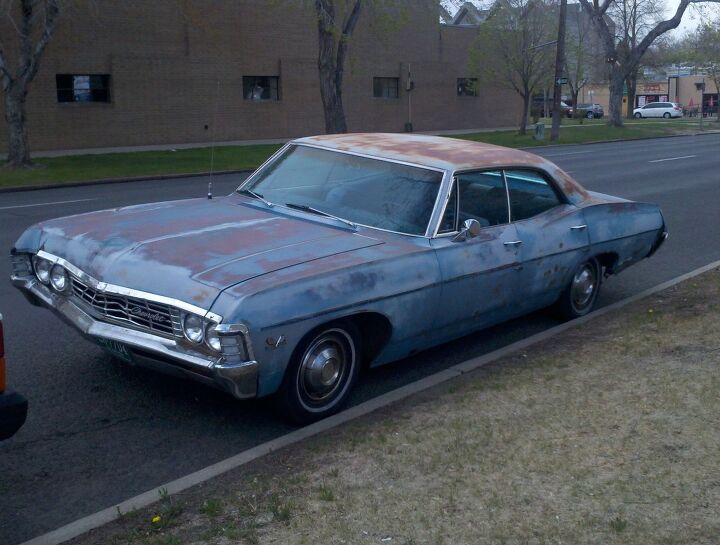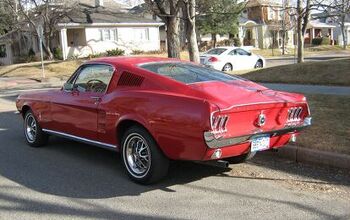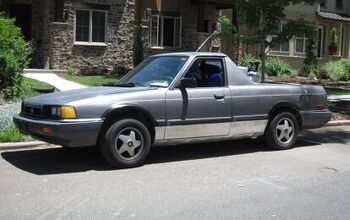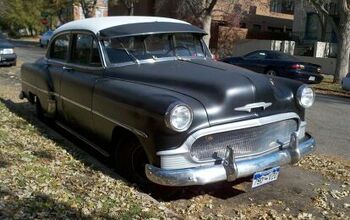Down On The Mile High Street: 1967 Chevrolet Impala

With all the relatively solid big Detroit cars from the 1960s getting eaten by The Crusher in these days of $4/gallon gasoline and $250/ton scrap steel prices, how does a rough survivor like this sedan manage to stay out of the Chinese steel foundries?
The probable answer: because it keeps running!
The mid-to-late-1960s full-sized Chevy cars (and I can’t sweat this is actually an Impala, since all the emblems and most of the trim are gone; we might be looking at a Biscayne with Impala taillights, or a detrimmed Caprice) tended to be very sturdy and simple to fix, and they were manufactured in such vast numbers— well over a million units for the 1967 model year alone, counting wagons— that parts are still easy to find. Engine blows up? No problem— just drop in a random 350 from Pick-N-Pull and off you go.

Murilee Martin is the pen name of Phil Greden, a writer who has lived in Minnesota, California, Georgia and (now) Colorado. He has toiled at copywriting, technical writing, junkmail writing, fiction writing and now automotive writing. He has owned many terrible vehicles and some good ones. He spends a great deal of time in self-service junkyards. These days, he writes for publications including Autoweek, Autoblog, Hagerty, The Truth About Cars and Capital One.
More by Murilee Martin
Latest Car Reviews
Read moreLatest Product Reviews
Read moreRecent Comments
- 3-On-The-Tree My 2009 C6 corvette in black looks great when it’s all washed and waxed but after driving down my 1.3 mile long dirt road it’s a dust magnet. I like white because dust doesn’t how up easily. Both my current 2021 Tundra and previous 2014 Ford F-150 3.5L Ecobomb are white
- Bd2 Would be sweet on a Telluride.
- Luke42 When will they release a Gladiator 4xe?I don’t care what color it is, but I do care about being able to plug it in.
- Bd2 As I have posited here numerous times; the Hyundai Pony Coupe of 1974 was the most influential sports and, later on, supercar template. This Toyota is a prime example of Hyundai's primal influence upon the design industry. Just look at the years, 1976 > 1974, so the numbers bear Hyundai out and this Toyota is the copy.
- MaintenanceCosts Two of my four cars currently have tires that have remaining tread life but 2017 date codes. Time for a tire-stravaganza pretty soon.












































Comments
Join the conversation
These cars were actually pretty good on gas for the day when equipped with the 283 or one of the lower performance 327's. A well tuned 283 could easily get 18+mpg and a 327 wasn't far behind.
Many people that drove full size cars during the 60's and 70's now drive suvs and fullsize pickups. I grew up in the house that I now live in, and many of the neigbbors from those days who worked in the auto industry are still around. The people that worked for gm and drove cars like this back then are now driving silverados, tahoes, suburbans and the like. The retired ford workers that drove LTD's and such are now driving F-150's, explorers and expeditions. My wife's dad worked for the twinsburg chrysler plant, and back when I first met her her dad drove a D-100 and her mom had a 73 polara wagon. Now her dad drives a ram and her mom drives a grand cherokee.